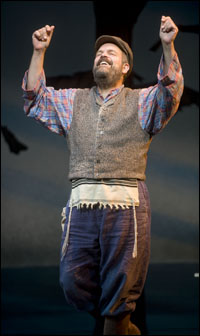I’m still on ice at the MacDowell Colony, writing furiously and happily, but I’ve just made two guest appearances in cyberspace:
 • Today I contributed to Beach Reads for Smart People, a summer-reading list posted by my friend Hannah Miet on The Atlantic Wire. Among those present: Stephen Elliott, Sasha Frere-Jones, Emily Gould, Frederick Kaufman, and Marcy Dermansky. I don’t feel remotely cool enough to keep such company–it’s as though I crashed the wrong party.
• Today I contributed to Beach Reads for Smart People, a summer-reading list posted by my friend Hannah Miet on The Atlantic Wire. Among those present: Stephen Elliott, Sasha Frere-Jones, Emily Gould, Frederick Kaufman, and Marcy Dermansky. I don’t feel remotely cool enough to keep such company–it’s as though I crashed the wrong party.
• Jon Winokur quizzed me a few days ago for his AdviceToWriters site. You might find my answers interesting, or not.
Now, back to work!
Archives for 2012
TT: Lookback
 From 2005:
From 2005:
As for Arlington National Cemetery, my brother and I spent a whole morning there, and could easily have spent a whole day if we’d had more time to spare. It’s no place for the flippant–Arlington has a way of making the overheard remarks of ironically inclined visitors sound shameful–but it has much to offer the aesthete, even the soul-deadened kind to whom patriotism is no more than gold-braided bigotry….
Read the whole thing here.
TT: Almanac
“Unless we regain the art of silence and insight, the ability for non-activity, unless we substitute true leisure for our hectic amusements, we will destroy our culture–and ourselves.”
Josef Pieper, Leisure: The Basis of Culture
TT: Just because
Jascha Heifetz plays his arrangement of the March from Prokofiev’s Love for Three Oranges, accompanied by Emanuel Bay:
(This is the latest in a series of arts-related videos that appear in this space each Monday and Wednesday.)
TT: Almanac
Content, if hence th’ unlearn’d their wants may view,
The learn’d reflect on what before they knew:
Careless of censure, nor too fond of fame,
Still pleas’d to praise, yet not afraid to blame,
Averse alike to flatter, or offend,
Not free from faults, nor yet too vain to mend.
Alexander Pope, An Essay on Criticism
I AM MY OWN PLAYWRIGHT
“The one-person play is now so familiar a genre for theatergoers that many would be surprised to learn it is among the youngest of all theatrical forms–little more than a half-century old. Because such shows are well liked by audiences and cost comparatively little to mount, many regional theater companies contrive to balance their books by putting on a new one every season. One (perhaps solipsistic) indication of the genre’s appeal is that my first play, a one-man show about Louis Armstrong, will be produced this season by two different New England theater companies. It is unlikely that either troupe would have agreed to collaborate on a production of a more ambitious script by a rookie…”
TT: A Fiddler in the Berkshires
In today’s Wall Street Journal drama column I review two out-of-town shows, a Massachusetts revival of Fiddler on the Roof and the Chicago production of Freud’s Last Session. Here’s an excerpt.
* * *
If it’s true–and it is–that they don’t make musicals the way they used to, then “Fiddler on the Roof” is the last of the indisputably classic Broadway musicals to have been made the old-fashioned way. The songs are memorable, the book soundly constructed, and Jerome Robbins’ dances, which are seen so often in modern-day revivals that they’ve come to be regarded as an inseparable part of “Fiddler,” blend local color with fresh choreographic invention to perennially pleasing effect.
Barrington Stage Company, which puts on some of the best musical-comedy productions to be seen in New England, set the bar high for its new “Fiddler” last summer when it mounted a “Guys and Dolls” that was superior in every way to the inept 2009 Broadway revival. This “Fiddler” isn’t that good–that would have taken a miracle of miracles–but it’s lively and satisfying.
 Gary John La Rosa, the director and choreographer, has opted for a conventional approach to “Fiddler,” faithfully reproducing Robbins’s dances, which are executed with energy and precision. Every scene pays off, especially the first-act dream sequence, and Jack Mehler’s semi-abstract backdrops, in which the thatched roofs of the shtetl of Anatevka are strewn across the Russian sky like the flocks of birds that are seen in the paintings of Robert Goodnough, add a delicate touch of poetry to the proceedings….
Gary John La Rosa, the director and choreographer, has opted for a conventional approach to “Fiddler,” faithfully reproducing Robbins’s dances, which are executed with energy and precision. Every scene pays off, especially the first-act dream sequence, and Jack Mehler’s semi-abstract backdrops, in which the thatched roofs of the shtetl of Anatevka are strewn across the Russian sky like the flocks of birds that are seen in the paintings of Robert Goodnough, add a delicate touch of poetry to the proceedings….
Barrington Stage rang the cherries three years ago with “Freud’s Last Session,” the two-man play in which Mark St. Germain imagines what might have happened if Sigmund Freud and C.S. Lewis had met in London on the first day of World War II to wrangle over the question of God’s existence. The Off-Broadway production of Mr. St. Germain’s witty play, which opened in 2010, is still going strong, and “Freud’s Last Session” is now being mounted by theaters across the country…
The long-running Chicago version of “Freud’s Last Session,” directed by Tyler Marchant, is an exact reproduction of Mr. Marchant’s excellent Off-Broadway staging, right down to Brian Prather’s meticulous rendering of Freud’s London consulting room. What’s new about it is Mike Nussbaum, the dean of Chicago actors, who is now playing the part of Freud. Mr. Nussbaum is 88 years old, though you wouldn’t guess it to look at him. I’ve seen him onstage many times–his ferociously smug Shylock in Barbara Gaines’ 2005 “Merchant of Venice” at Chicago Shakespeare is deeply etched in my memory–but Mr. St. Germain’s Freud could have been written for Mr. Nussbaum, and his performance would make him a shoo-in for a Tony were he giving it on Broadway. He starts out calm and centered, a gray-bearded stoic who has gazed unflinchingly into the abyss. Only gradually does the intense physical pain from which Freud suffered manifest itself, but when it does, you’ll shiver in your seat at the sight of a sick, weary old man who has nothing to look forward to but death….
* * *
Read the whole thing here.
An excerpt from the Chicago production of Freud’s Last Session:
TT: Almanac
“Extremes meet, and there is no better example than the haughtiness of humility.”
Ralph Waldo Emerson, Letters and Social Aims
